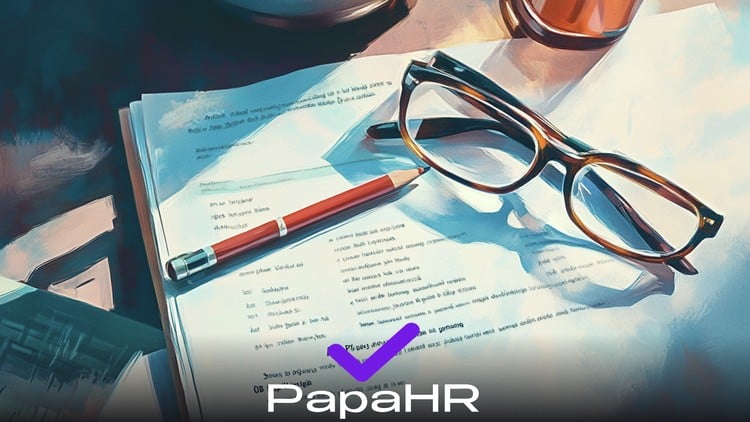
Job Analysis and Design | Definition | Competency Framework | Workforce Planning | Skills Mapping | Talent Strategy | HR
⏱️ Length: 3.3 total hours
⭐ 4.23/5 rating
👥 6,952 students
🔄 October 2025 update
Add-On Information:
Note➛ Make sure your 𝐔𝐝𝐞𝐦𝐲 cart has only this course you're going to enroll it now, Remove all other courses from the 𝐔𝐝𝐞𝐦𝐲 cart before Enrolling!
-
Course Overview
- Strategic Foundation: Understand job profiles as critical strategic tools, not mere administrative documents, driving organizational performance and competitive advantage.
- Talent Lifecycle Blueprint: Discover how robust job profiles form the core blueprint for effective talent acquisition, development, and retention.
- Competency Framework Mastery: Learn to design and implement behaviorally anchored competency frameworks that predict high performance and align with strategic goals.
- Dynamic Role Descriptions: Master crafting clear, impactful role descriptions that enhance communication, clarify expectations, and foster organizational alignment.
- Systematic Requirements Identification: Delve into methods for identifying and validating all essential job requirements, including technical, soft skills, and behavioral traits.
- Agile HR Transformation: Gain insights into adapting job profiling to evolving business landscapes, technological shifts, and workforce demographics.
- Organizational Health Indicator: Explore how well-defined roles contribute directly to organizational health, employee satisfaction, and a culture of accountability.
-
Requirements / Prerequisites
- Basic HR Familiarity: A foundational understanding of core HR functions (e.g., recruitment, training) is beneficial for contextualizing material.
- Analytical Aptitude: Ability to critically analyze roles, deconstruct tasks, and identify underlying competencies will enhance learning and application.
- Strategic HR Interest: Genuine curiosity about organizational design, talent management, and workforce optimization will deepen engagement.
- Online Learning Readiness: Reliable internet access and a computer are necessary for engaging with course content and resources.
- Application Mindset: Willingness to apply learned methodologies to real-world scenarios for practical skill development.
-
Skills Covered / Tools Used
- Advanced Job Analysis: Proficiency in methodologies like task analysis, critical incident technique, and functional job analysis for comprehensive role understanding.
- Competency Modeling: Ability to design, validate, and integrate competency models aligning with organizational strategy and predicting role success.
- Role Description Articulation: Skill in crafting precise, legally compliant, and strategically effective role descriptions for various organizational needs.
- Workforce Planning Integration: Capacity to connect detailed job profiles with broader workforce planning, anticipating future talent needs.
- Skills Gap Analysis: Expertise in using job profile data to identify talent gaps and inform targeted development programs.
- Enhanced Talent Acquisition: Leveraging optimized job profiles to streamline recruitment, improve candidate matching, and elevate hire quality.
- Performance Management Foundation: Designing objective performance appraisal systems rooted in clear job profiles and competency frameworks.
- Career Pathing Development: Constructing clear career progression paths and development programs based on role requirements and competencies.
- HR Tech Utilization (Conceptual): Understanding how HRIS and talent management platforms can store, manage, and leverage job profile data.
- Legal Compliance in Job Design: Applying best practices to ensure job descriptions meet legal standards and mitigate employment risks.
-
Benefits / Outcomes
- Elevated Strategic HR Role: Transform into a strategic HR partner, influencing organizational design and talent strategy with expert job profiling.
- Improved Organizational Efficiency: Drive better recruitment, clearer performance, and more effective development, enhancing operational output.
- Enhanced Employee Clarity: Empower employees with transparent understanding of roles, responsibilities, and growth paths, boosting engagement.
- Data-Driven Decisions: Make objective, informed talent decisions across the lifecycle, from hiring to promotions, based on solid job data.
- Reduced Compliance Risk: Ensure legally defensible job descriptions, minimizing employment-related legal challenges.
- Accelerated HR Career Growth: Specialize in a critical HR domain, opening doors to advanced roles in talent management and OD.
- Future-Proofed Workforce: Equip your organization to adapt to market changes by designing roles and competencies for future readiness.
- Competitive Advantage: Attract, develop, and retain top talent by clearly defining success, fostering a high-performance culture.
-
PROS
- Strategic Depth: Offers a macro-level, strategic understanding of job profiles’ impact on organizational effectiveness and talent strategy.
- Practical Application: Provides actionable techniques and frameworks for immediate implementation of job profiling practices.
- Critical Skill Mastery: Develops essential skills for navigating complex talent challenges in dynamic work environments.
- Tangible Business Impact: Directly contributes to improved recruitment, clearer performance management, and effective talent development.
-
CONS
- Conceptual Software Focus: Primarily focuses on methodologies, with less direct, hands-on training on specific HRIS software functionalities.
Learning Tracks: English,Business,Human Resources
Found It Free? Share It Fast!